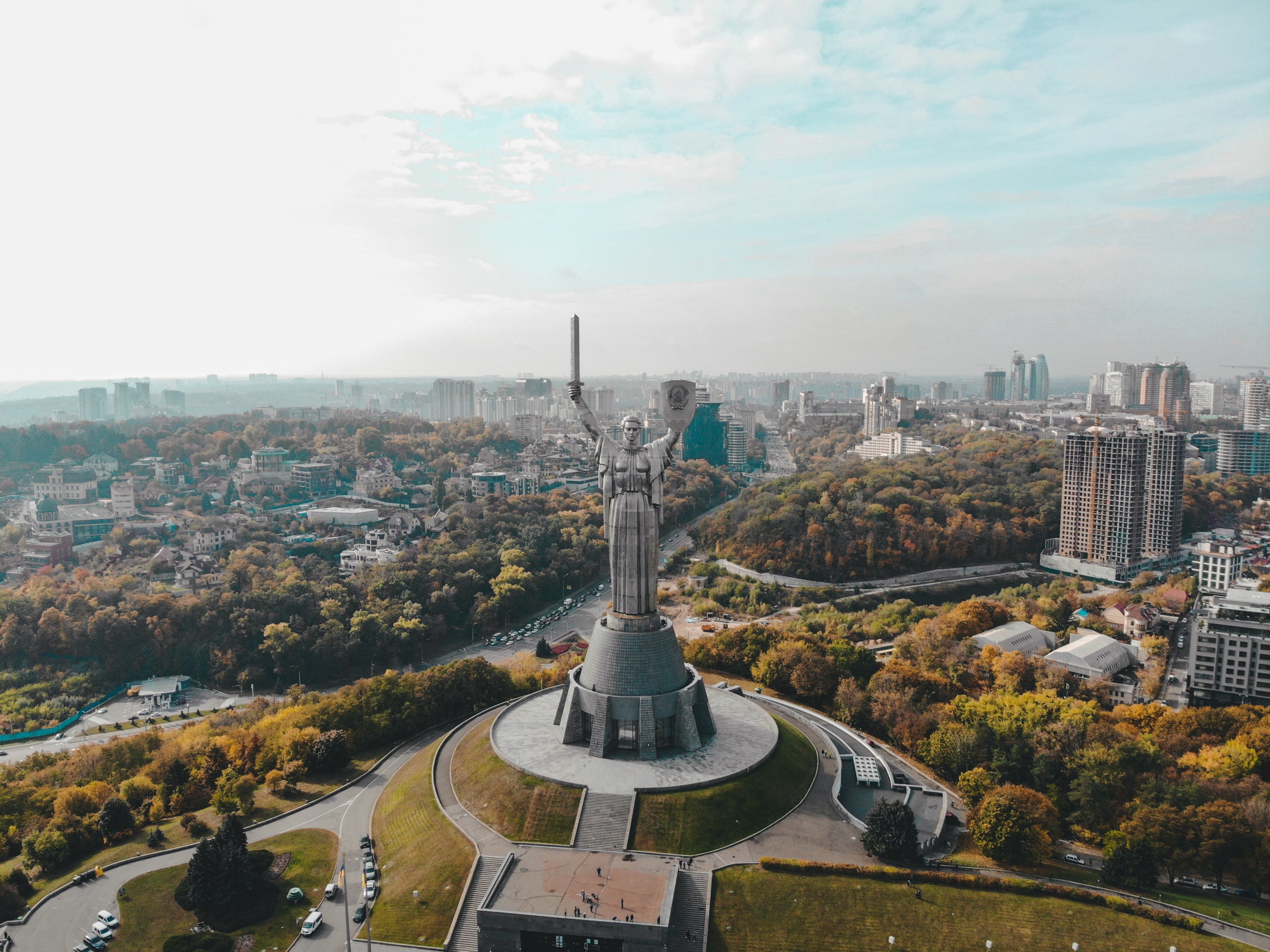Ukrainian director general details digital transformation in war-time Ukraine
Gulsanna Mamediieva, a Ph.D. candidate at Kyiv University whose research was interrupted by the war, is now a Tech & Public Policy Research Fellow at the McCourt School.
In conversation with the McCourt School, Gulsanna Mamediieva discusses the relationship between digital transformation and governance, and the future of democratization and anti-corruption efforts.

What preempted the Ministry of Digital Transformation’s establishment in 2019, and what is its primary role?
The Ministry of Digital Transformation (MDT) of Ukraine was created in 2019 to implement then-newly-elected President Zelenskyy’s “state in a smartphone” vision, underscored by his belief that government should deliver services quickly and conveniently, with only a few clicks. President Zelenskyy’s aspiration was to build a convenient, paperless digital state, without bureaucracy.
In 2019, the MDT established four strategic goals for building a digital state by 2024:
- Providing all government services online
- Enrolling 6 million Ukrainians in the digital skills development program
- Expanding IT to a 10% share of the country’s GDP
- Offering high-speed internet in 95% of the transportation infrastructure and settlements
What were your responsibilities as director general on EU integration in the Ministry of Digital Transformation?
I was in charge of the European integration of Ukraine’s digital sector and, together with my team, I helped develop and implement Ukraine’s integration strategy into the EU Digital Single Market , which aims to break down the barriers to cross-border online activity. My work comprised many components: electronic communications, e-services, online safety, privacy, open data, digital skills, innovation, trust and identification services, e-commerce, economic empowerment, countering the digital divide, and more.
How has the ongoing war in Ukraine impacted your work or that of the agency?
Three years after establishing its digital agenda, Ukraine made a giant leap in digitization and was a worldwide leader in the pace and speed of digital transformation. Despite the ongoing full-scale war in Ukraine, the MDT continues to work toward its strategic goals and advance President Zelenskyy’s vision. However, the Ministry has transformed, and now, must prioritize addressing new, war-related challenges, such as military tech, cybersecurity and the connectivity of critical infrastructure.
What is the relationship between digital transformation and governance?
Digital transformation affects all levels of the public sphere — individuals, their associations, public institutions and democracy as a whole. It offers enormous opportunities to strengthen democracy and good governance. During challenging times, such as a pandemic or war, the ability to “go digital” greatly contributes to the resilience of society, ensuring that institutions can continue to work and public services be delivered. At the same time, digitalization exposes democracy and public administration to new vulnerabilities from hostile or ambivalent actors.
How does digital transformation impact democratization and anti-corruption efforts?
Overall, digital technology offers ways to enhance the quality of democracy in terms of accountability and responsiveness, but appropriate measures should be introduced. Internet access and digital skills are critical elements of inclusive participation in the democratic process. Digital transformation has also gained prominence as an anti-corruption tactic, particularly with respect to public services, as it focuses not just on digitalization, but on cultural, organizational and operational changes within government agencies. There are really great case studies of this in Ukraine, including one which shows how to mitigate a corruption scheme of billion annually by digitalizing just one service.
What factors motivate stakeholders to implement digital transformation?
Embracing digital transformation requires a cultural change in the work of civil servants and an understanding that to gain great results and drive real change in people’s lives, we must empower the public. Digital transformation is about convenience, speed and efficiency. The war in Ukraine is a great example of how, even during challenging times and with a lack of resources, people can implement brave, bold and transformative solutions. With much less resistance from the establishment, Ukrainians have deployed new services in several days. In a peaceful time, it could have taken months or even years.
How can countries use digital transformation to combat disinformation? Has Ukraine been forced to implement some of those strategies and tactics during wartime?
Ukraine has long been subject to disinformation and propaganda campaigns from Russia. Because of virality, disinformation spreads rapidly in the new news ecosystem. This problem demands professional vigilance, commitment to ethics, high standards of reporting and verification (including collaborative verification methods) of both information and sources, along with active debunking and creative reportage.
As social media platforms are a primary tool for the public to gain information about ongoing injustices in Ukraine, the MDT must work directly with companies on a case-by-case basis to resolve problems. For example, Ukrainian media and influencers’ accounts and posts are blocked, in many cases as “sensitive material,” for telling the truth about the war. Ukraine implemented a consortium of fact-checkers with neighboring countries, creating Ukrainian English-speaking digital media, and enhancing digital and media literacy among them, though the government will need to continue to build resilience to Russian disinformation for the duration of the war and ensure that it continues to withstand it in the future
